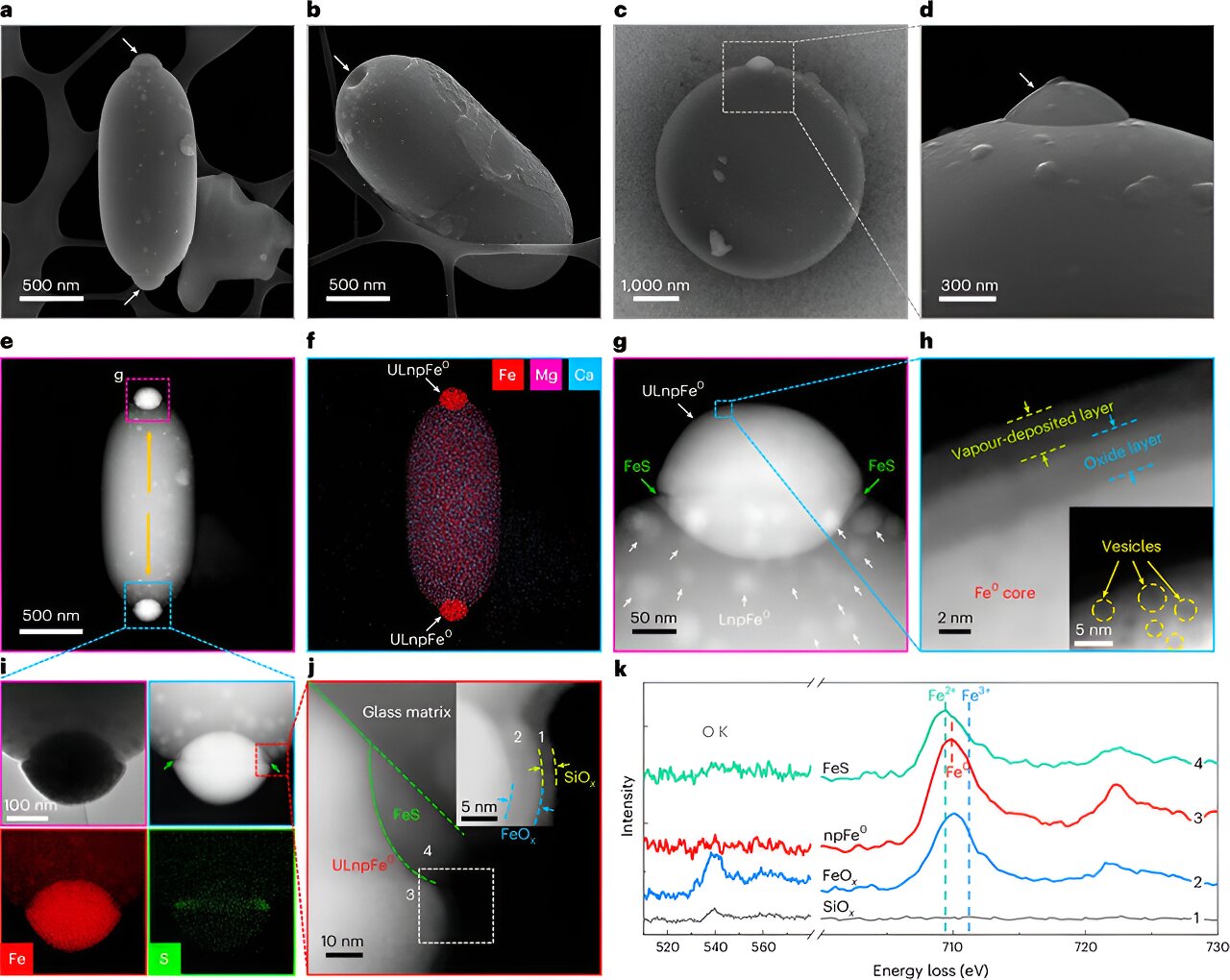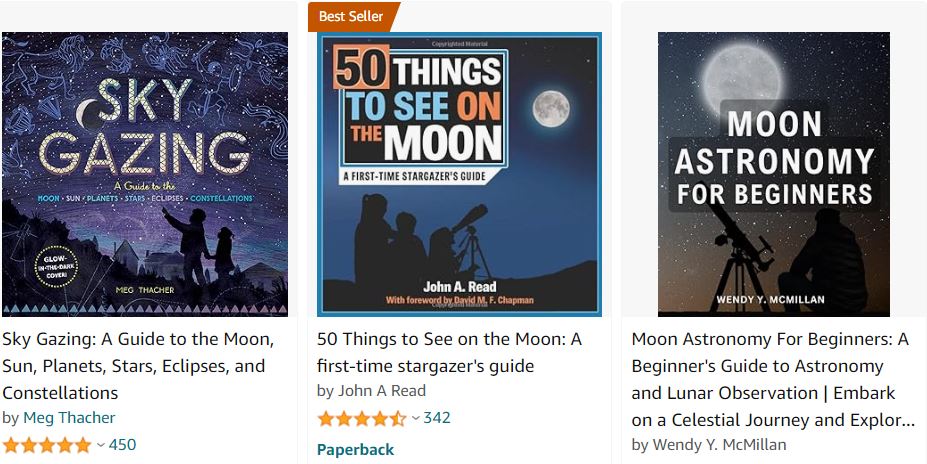
“We discovered that the glass beads in the Chang’e-5 lunar soil can preserve iron particles of different sizes, from about 1 nanometer to 1 micrometer,” said Prof. Bai.
“It is generally difficult to distinguish npFe0 of different origins observed together in single samples. Here we used the rotation feature of the impact glass beads to clearly distinguish npFe0 formed before and after the solidification of the host glass beads.”
In this study, the scientists found numerous discrete large npFe0, tens of nanometers in size, which tended to concentrate towards the extremities of the glass beads. This concentration effect can cause ultralarge npFe0 to protrude from the extremities.
Such a feature is exactly consistent with the migration phenomenon occurring in rotational glass-forming droplets triggered by hypervelocity impacts. In such scenarios, Fe0 with higher density than the matrix migrates to the extremities driven by centrifugal forces, indicating that these large npFe0 were formed in impact-derived melts before the glass beads solidified.
In contrast, they also identified abundant small npFe0, several nanometers in size, densely populating the surfaces of the glass beads. These small npFe0 exhibit distribution characteristics similar to irradiation-induced vesicle damage.
Along the depth direction of the glass beads, both small npFe0 and vesicles gradually decrease in size and abundance, corresponding to the decreasing amount of implanted solar wind ions with increasing depth.
Furthermore, when the size of the lunar grains is smaller than twice the penetration depth of the solar wind ions, small npFe0 can completely fill up the tiny grains. These results emphasize that solar wind irradiation is the primary driver of the observed small npFe0.
The study demonstrates that solar wind irradiation and micrometeorite impacts both play important but distinct roles in npFe0 formation. The independent growth of small and large npFe0 revealed in this research matches well with many remote sensing measurements, providing valuable insights for understanding and predicting the optical properties of airless bodies exposed to different space environments. https://phys.org/news/2024-06-scientists-lunar-metallic-iron.html









Recent Comments